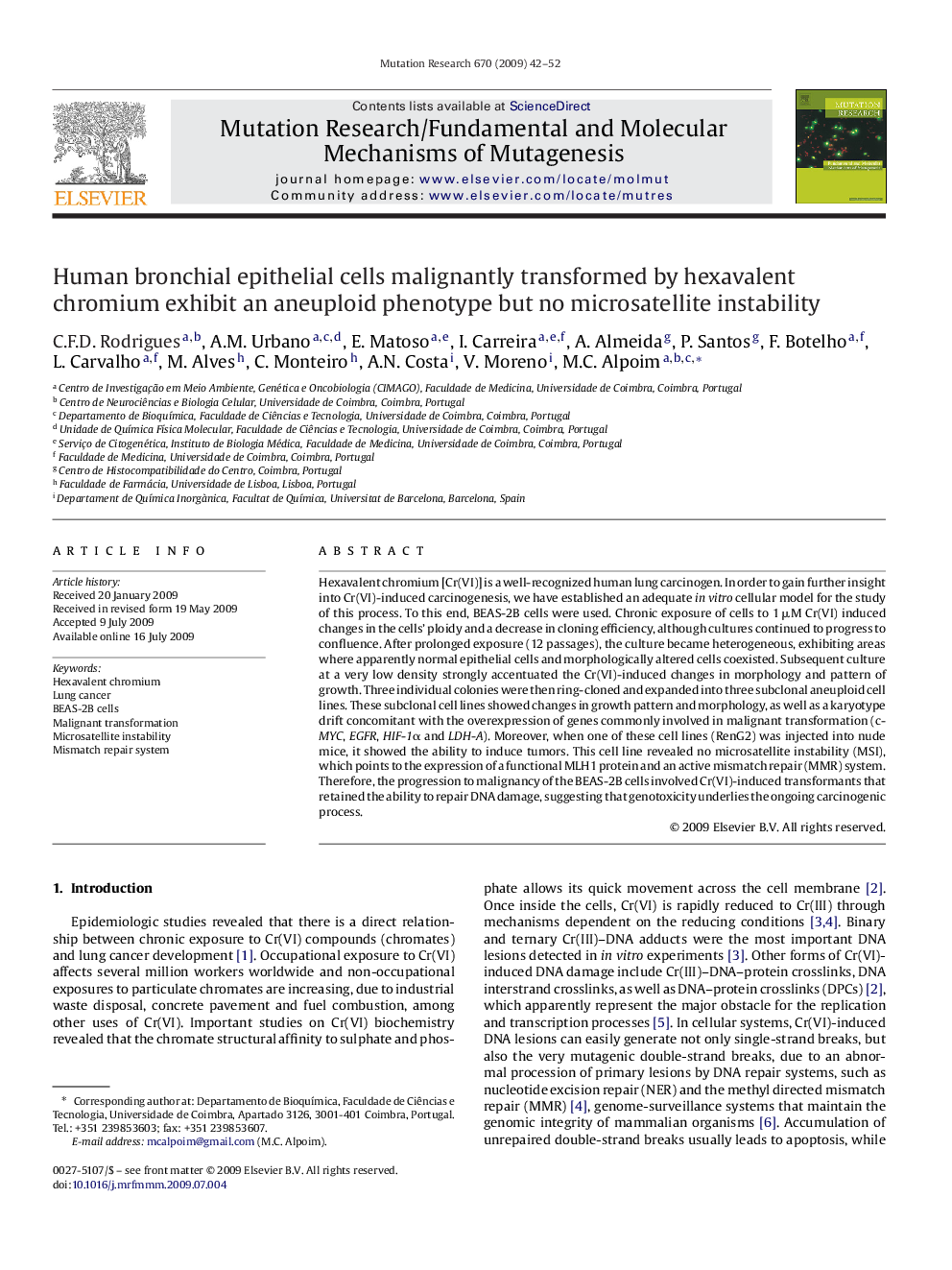| کد مقاله | کد نشریه | سال انتشار | مقاله انگلیسی | نسخه تمام متن |
|---|---|---|---|---|
| 2146895 | 1548381 | 2009 | 11 صفحه PDF | دانلود رایگان |

Hexavalent chromium [Cr(VI)] is a well-recognized human lung carcinogen. In order to gain further insight into Cr(VI)-induced carcinogenesis, we have established an adequate in vitro cellular model for the study of this process. To this end, BEAS-2B cells were used. Chronic exposure of cells to 1 μM Cr(VI) induced changes in the cells’ ploidy and a decrease in cloning efficiency, although cultures continued to progress to confluence. After prolonged exposure (12 passages), the culture became heterogeneous, exhibiting areas where apparently normal epithelial cells and morphologically altered cells coexisted. Subsequent culture at a very low density strongly accentuated the Cr(VI)-induced changes in morphology and pattern of growth. Three individual colonies were then ring-cloned and expanded into three subclonal aneuploid cell lines. These subclonal cell lines showed changes in growth pattern and morphology, as well as a karyotype drift concomitant with the overexpression of genes commonly involved in malignant transformation (c-MYC, EGFR, HIF-1α and LDH-A). Moreover, when one of these cell lines (RenG2) was injected into nude mice, it showed the ability to induce tumors. This cell line revealed no microsatellite instability (MSI), which points to the expression of a functional MLH1 protein and an active mismatch repair (MMR) system. Therefore, the progression to malignancy of the BEAS-2B cells involved Cr(VI)-induced transformants that retained the ability to repair DNA damage, suggesting that genotoxicity underlies the ongoing carcinogenic process.
Journal: Mutation Research/Fundamental and Molecular Mechanisms of Mutagenesis - Volume 670, Issues 1–2, 2 November 2009, Pages 42–52